Ever feel that little pang of anxiety when you hear a knock but aren’t expecting anyone? Or maybe you’re just tired of finding “Sorry we missed you!” notes for packages you desperately needed.
I’ve definitely been there.
Smart doorbells completely change the game. They let you see and talk to anyone at your door right from your smartphone, whether you’re on the couch or across the country.
This 2025 guide is here to answer the big question: are smart doorbells worth it? We’ll walk through the real pros, cons, and my top picks to help you find the perfect video doorbell camera for your setup. Let’s get into it together.
Key Takeaways
Video doorbells like the Google Nest, Ring, TP-Link Tapo D225, and Eufy S220 allow you to see, talk to, and monitor visitors and packages in real time from a phone or tablet. Many models now feature advanced tech like color night vision and AI-powered alerts for people and packages, and they often work with voice assistants like Alexa or Google Home.
Subscription costs are a major factor. You can expect to pay between $4 and $10 per month for cloud storage and premium features. For instance, Ring Protect now starts at $4.99 a month, while Nest Aware is $8 a month, so two years of service can easily cost more than the device.
Security and privacy are not guaranteed. The FTC fined Ring $5.8 million in 2023 for employee misuse of customer videos, and less-known brands like Eken and Tuck faced FCC scrutiny in 2023 and 2024 for significant privacy breaches. Always use strong passwords and two-factor authentication to protect yourself.
Wired models offer constant power but require existing doorbell wiring for installation. In contrast, battery-powered units like the Eufy S220 or TP-Link Tapo D225 are perfect for renters, with some lasting up to four months on a single charge. Many subscription-free options support local storage via a microSD card.
Top-rated no-subscription doorbells include the Eufy S330 with its dual cameras, the Lorex 2K QHD which supports up to a 256GB SD card, and the Reolink 2K Dual-Band with a five-month battery life. These models help you avoid recurring fees while keeping your video files private.
Table of Contents
Benefits of Smart Doorbells
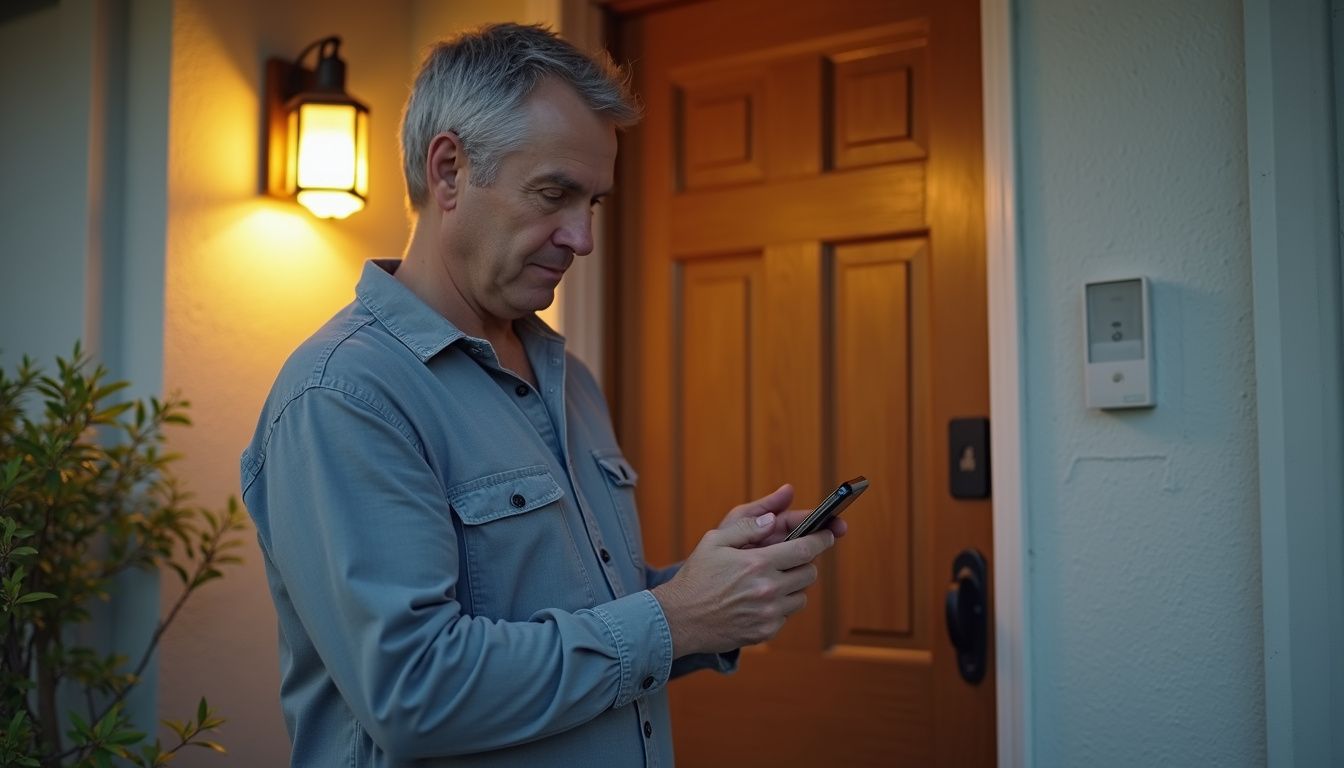
A smart doorbell is way more than a button that makes a noise. It’s your front door’s new brain, letting you see and talk to anyone who shows up, all through an app on your phone or tablet.
These devices easily connect with smart home ecosystems like Amazon Echo or Google Home, giving your home a serious tech upgrade and a major security boost.
How do smart doorbells improve home security?
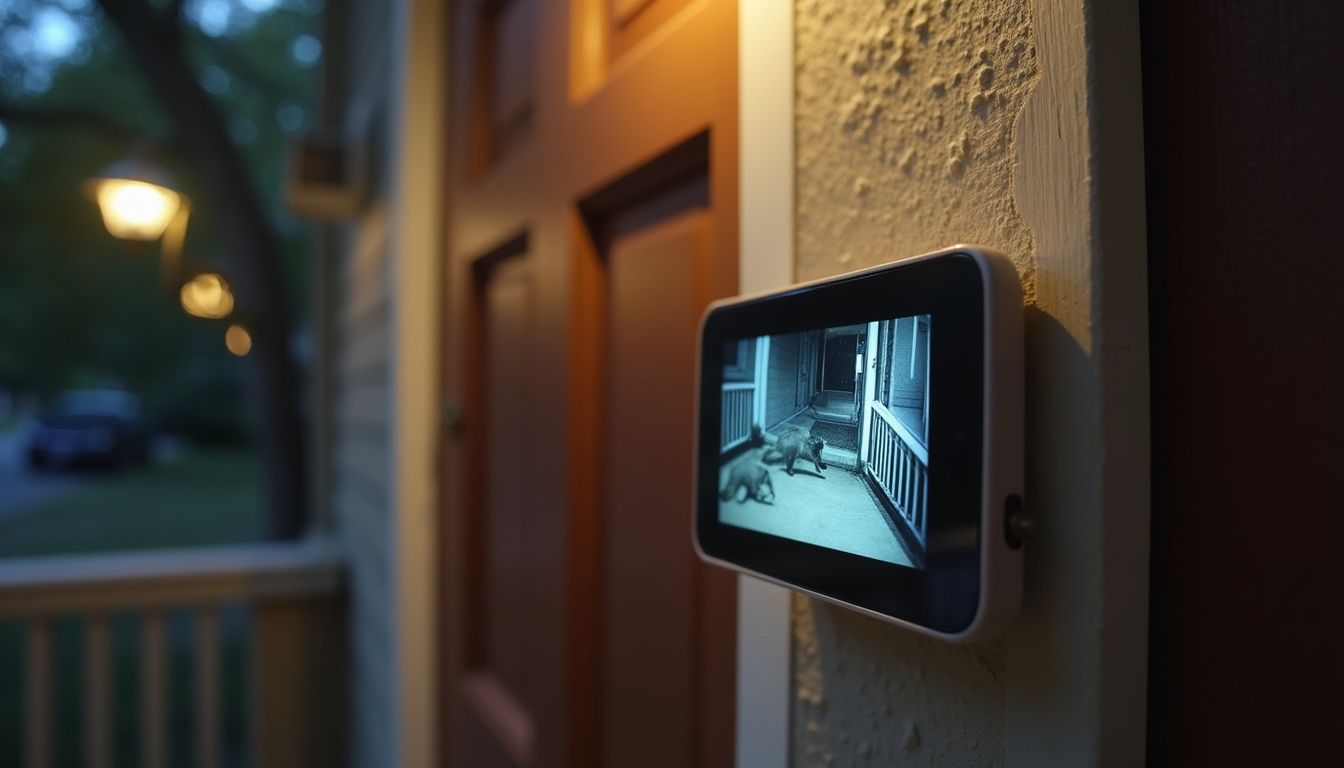
Modern color night vision means you can actually see faces and read labels on packages after dark, not just make out shadowy blobs. I once caught a raccoon in full HD on my TP-Link Tapo, I was convinced it was a porch pirate until I saw the tiny masked bandit on the video.
Thanks to two-way audio, you can give delivery instructions from your desk at work or scare off a potential snooper with a loud “Can I help you?” Most current models, like the Google Nest Doorbell and Ring Video Doorbells, use advanced AI to tell the difference between a person and a passing car. You can even set specific activity zones to monitor your walkway but ignore the sidewalk.
Some premium models from Ring even offer “3D Motion Detection” which uses radar to track the exact path a visitor took to your door, giving you a bird’s-eye view of their approach. This helps you understand their intent and reduces false alarms.
You can also get a nice little bonus on your homeowner’s insurance. Many companies offer discounts for homes with security cameras. If you’re curious, you can check out a homeowners insurance quote to see if you could save.
How can I monitor and communicate remotely with a smart doorbell?
One of the coolest parts of having a smart doorbell is being able to check in on your front porch from literally anywhere. I once had a conversation with a delivery driver while I was waiting in line at a conference, all from my iPhone 12.
You get real-time alerts on your smartphone the moment motion is detected or the bell is rung. With brands like Ring, Google Nest, or Eufy, you just tap the notification to see a crisp live video feed, often in high dynamic range (HDR) for better clarity.
Most apps also have a “Quick Reply” feature. If you’re busy, you can have the doorbell play a pre-recorded message like, “Please leave the package at the door,” which is incredibly handy.
And with smart home integration, you can have the video feed pop up on your smart TV or an Echo Show device. This lets you see who’s there without even picking up your phone.
What notifications do smart doorbells provide for packages and visitors?
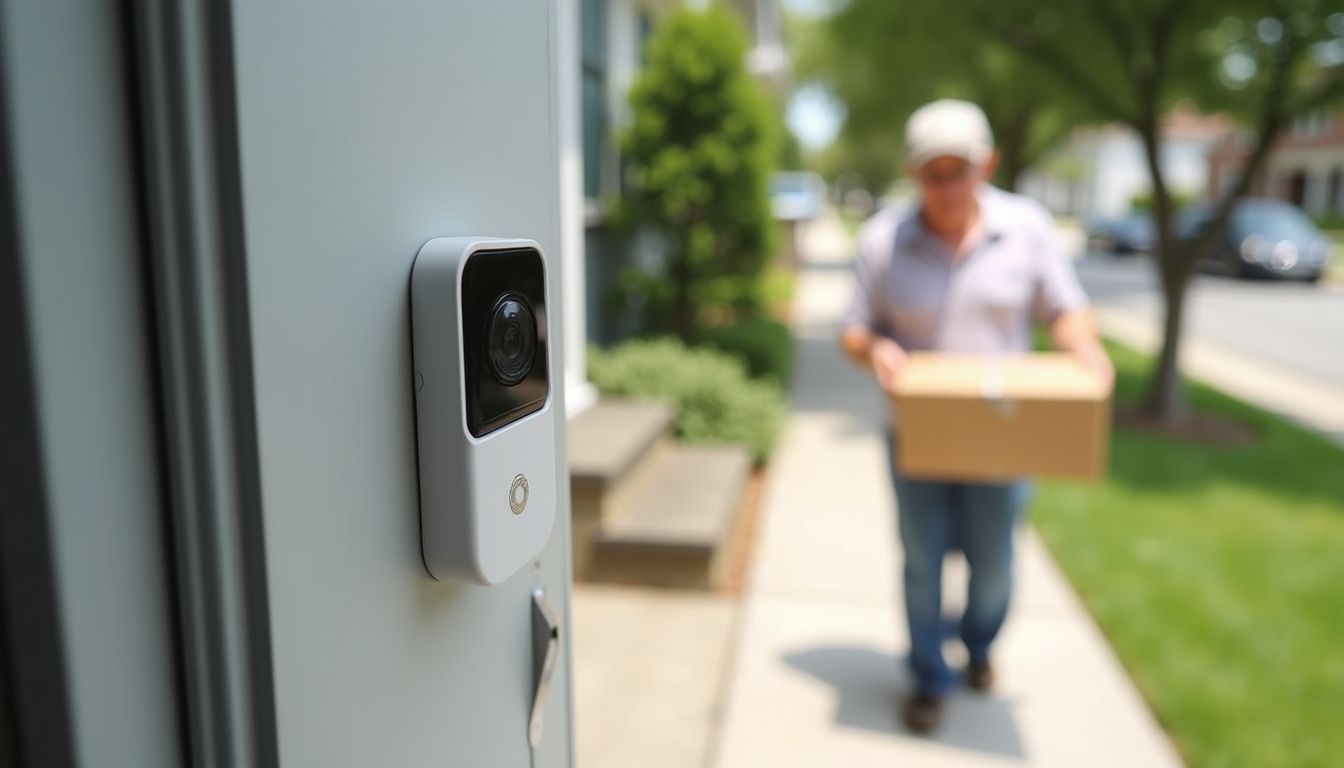
Beyond simple motion alerts, the real magic is in the smart notifications that tell you *what* the camera is seeing. A model like the Google Nest Doorbell (Wired, 2nd Gen) can distinguish between a person, a package, an animal, and a vehicle.
You get specific push alerts that say “Package detected” or “Person seen,” which is far more useful than a generic “Motion detected” alert. This helps combat package theft, which remains a huge issue, with some reports indicating millions of packages are stolen from porches annually.
The AI behind this has gotten really good. Doorbells from brands like Ring and Eufy can recognize the shape and size of a box and ping your phone within seconds of it being dropped off. Some Eufy models even have a dual-camera system, one pointing forward and one pointing down, to give you a perfect view of any package left on your doorstep.
How do smart doorbells integrate with other smart home devices?
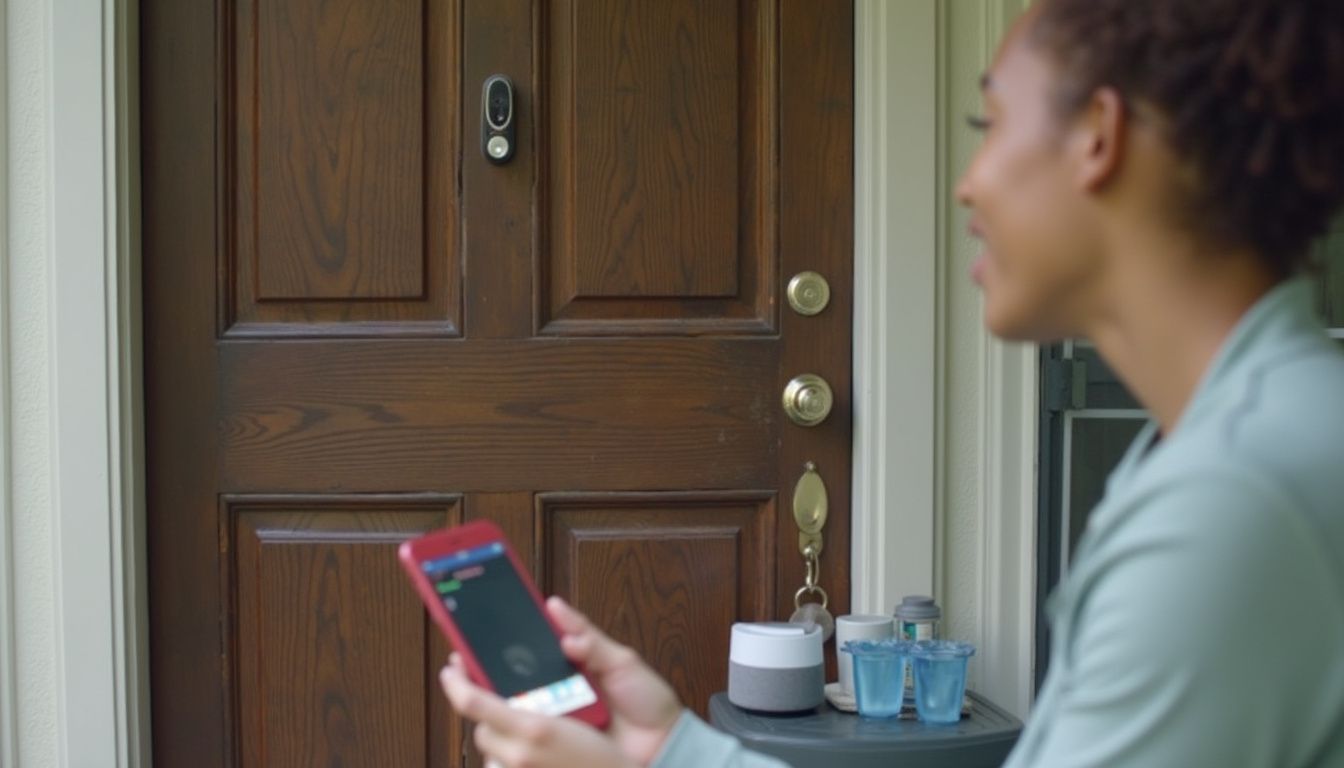
Smart doorbells are team players. They connect with other smart devices in your home to create helpful automations. My setup lets me ask Siri on my HomePod who’s at the door, and it gives me a description.
Here are a few cool integrations you can set up:
- Smart Locks: When a friend arrives, you can see them on your doorbell camera and then unlock your August or Schlage smart lock right from the same app.
- Smart Lighting: You can have your Philips Hue or Wyze outdoor lights turn on automatically whenever your doorbell detects motion at night.
- Voice Assistants: Your Amazon Echo or Google Home speakers can announce, “Someone is at the front door,” and even show the live video feed on a screen-enabled device like the Echo Show.
- Security Systems: A doorbell can act as a trigger for a larger security system, starting recordings on other cameras or sounding an alarm if needed.
While full integration through the Matter smart home standard is still rolling out slowly in 2025, many devices from Eufy and TP-Link Tapo already offer great cross-platform support with Apple HomeKit, Alexa, and Google Home.
Potential Drawbacks of Smart Doorbells
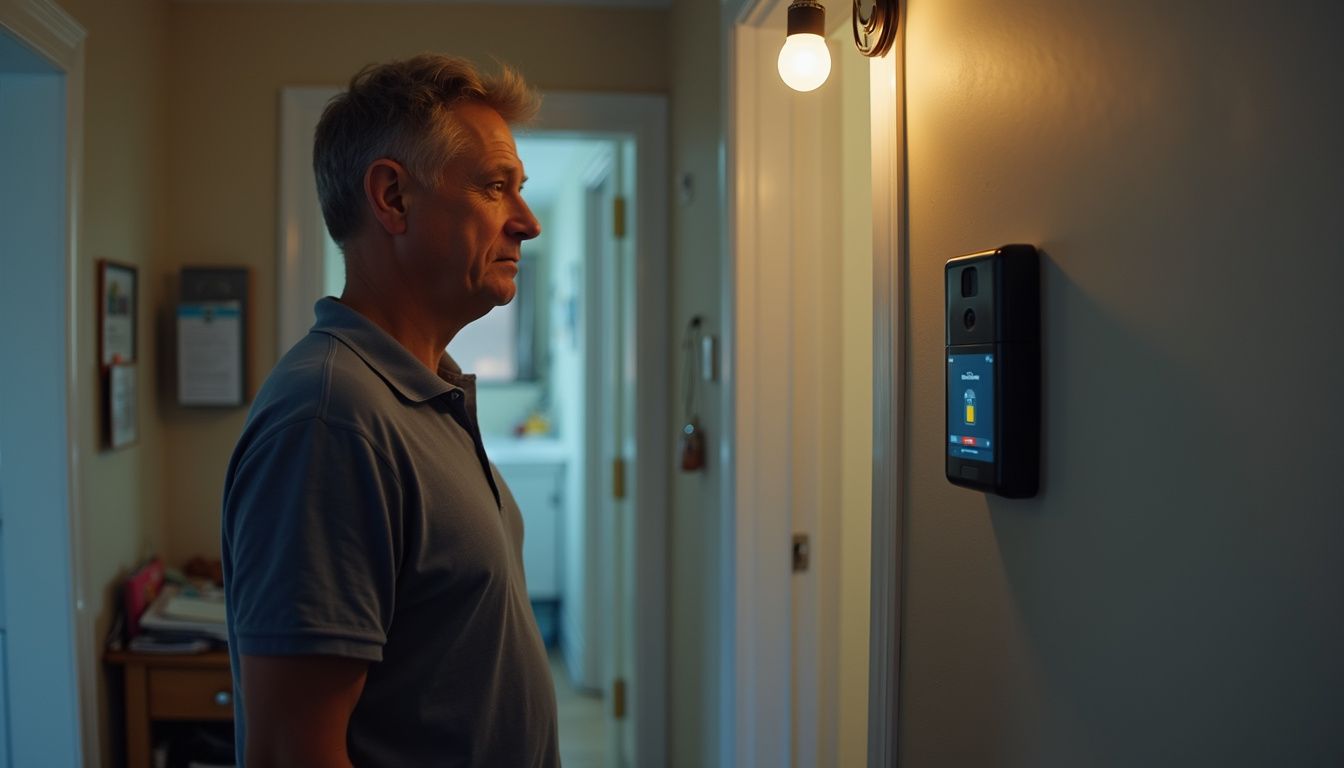
Of course, it’s not all perfect. Every video doorbell camera has some trade-offs, like surprise costs, Wi-Fi drama, and data privacy questions. It’s smart to know the downsides before you buy.
What are the subscription costs for smart doorbells?

This is the big one that catches people by surprise. While many features are free, the most useful ones, like saving video clips and getting smart alerts, are often locked behind a monthly subscription.
Without a plan, you typically only get live view and a basic notification when someone rings the bell. Over time, these fees can add up to more than the cost of the doorbell itself.
Here’s a quick look at the starting plans for 2025:
| Brand | Plan Name | Starting Monthly Price | Key Features Unlocked |
|---|---|---|---|
| Ring | Ring Protect Basic | $4.99 | 60 days of video history, person alerts, package alerts |
| Google Nest | Nest Aware | $8.00 | 30 days of event video history, familiar face detection |
| Arlo | Arlo Secure | $7.99 | 30 days of video history, smart object detection |
How does Wi-Fi connectivity affect smart doorbell performance?
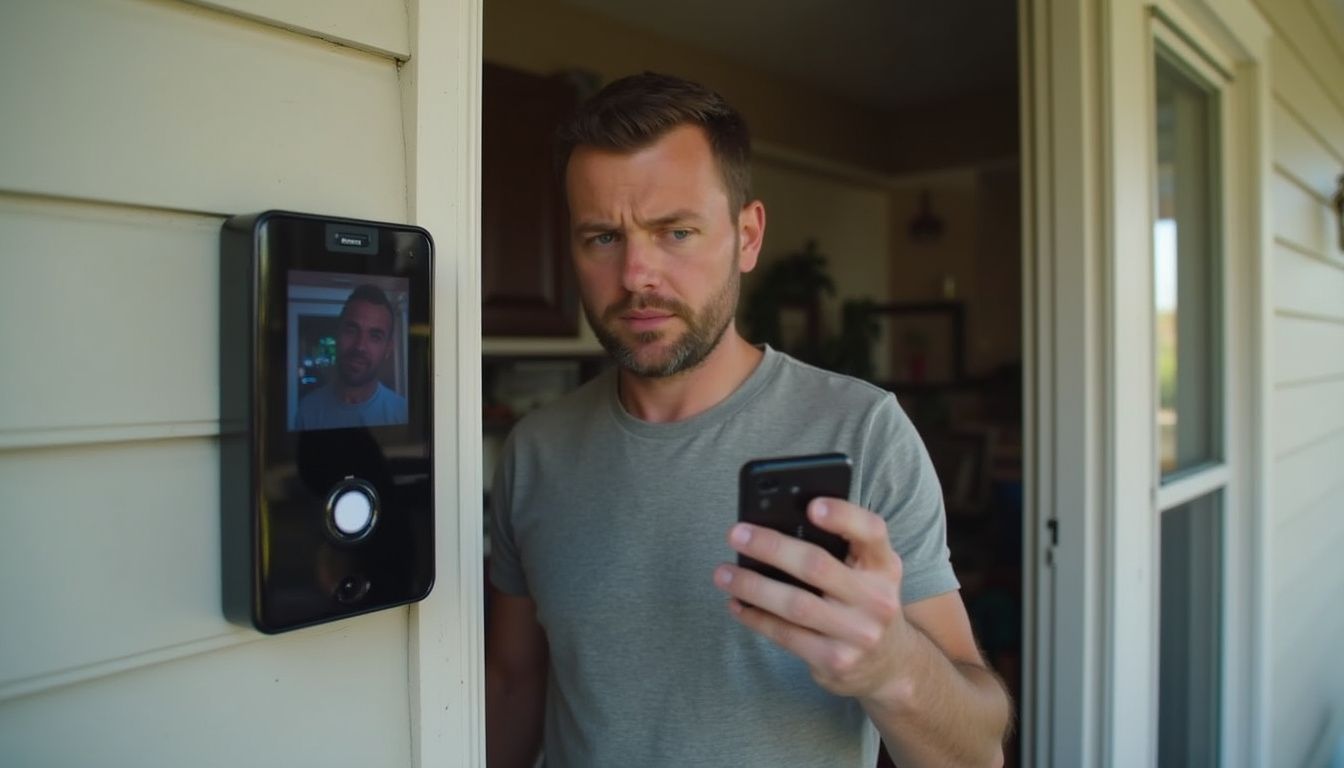
Your smart doorbell is only as good as your Wi-Fi connection. If your internet is spotty or slow, you’ll experience frustrating video freezes, pixelated images, and delayed notifications. When the Wi-Fi goes down completely, most cloud-based features stop working entirely.
To get that smooth, high-resolution footage that brands advertise, you need a decent upload speed. Most manufacturers, including Google Nest and Eufy, recommend a minimum upload speed of 2 Mbps at the location of the doorbell.
If your router is old or far from your front door, you might struggle. A helpful tip I learned from the r/HomeAutomation subreddit is to use a Wi-Fi extender or upgrade to a mesh system like Eero or Google Wifi to ensure a strong signal reaches your porch.
What privacy and security risks should I be aware of?
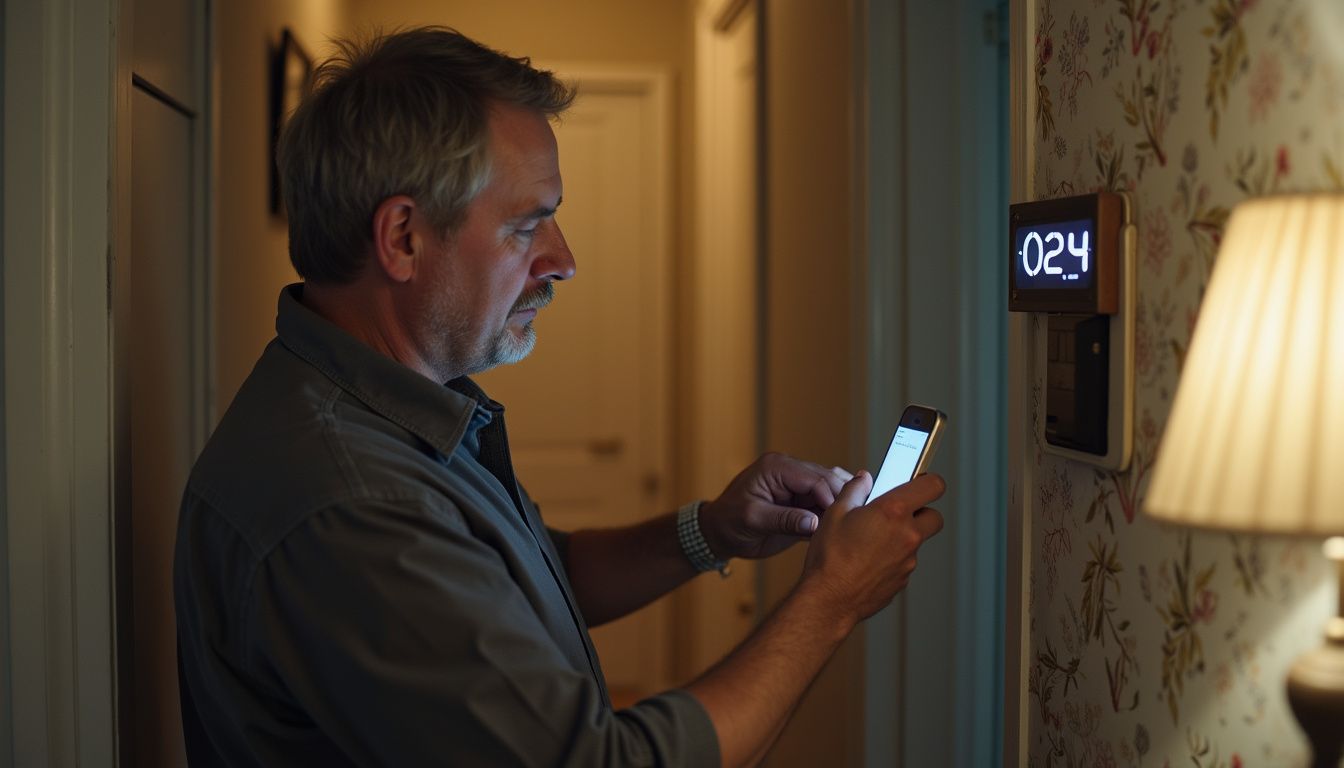
When you put a camera on your front door, you need to think about who else might be watching. On May 31, 2023, the Federal Trade Commission fined Ring $5.8 million for allowing employees and contractors to access private customer videos.
There are also hacking risks. Security researchers have found major vulnerabilities in cheaper, off-brand doorbells from companies like Eken and Tuck, which could expose your home Wi-Fi network. Stick to reputable brands that prioritize security.
To keep your footage safe, always enable two-factor authentication (2FA). This adds a critical layer of security that requires a code from your phone to log in, preventing unauthorized access even if someone steals your password. Brands like Ring and Google now offer end-to-end encryption, which is another great feature to look for.
Types of Smart Doorbells
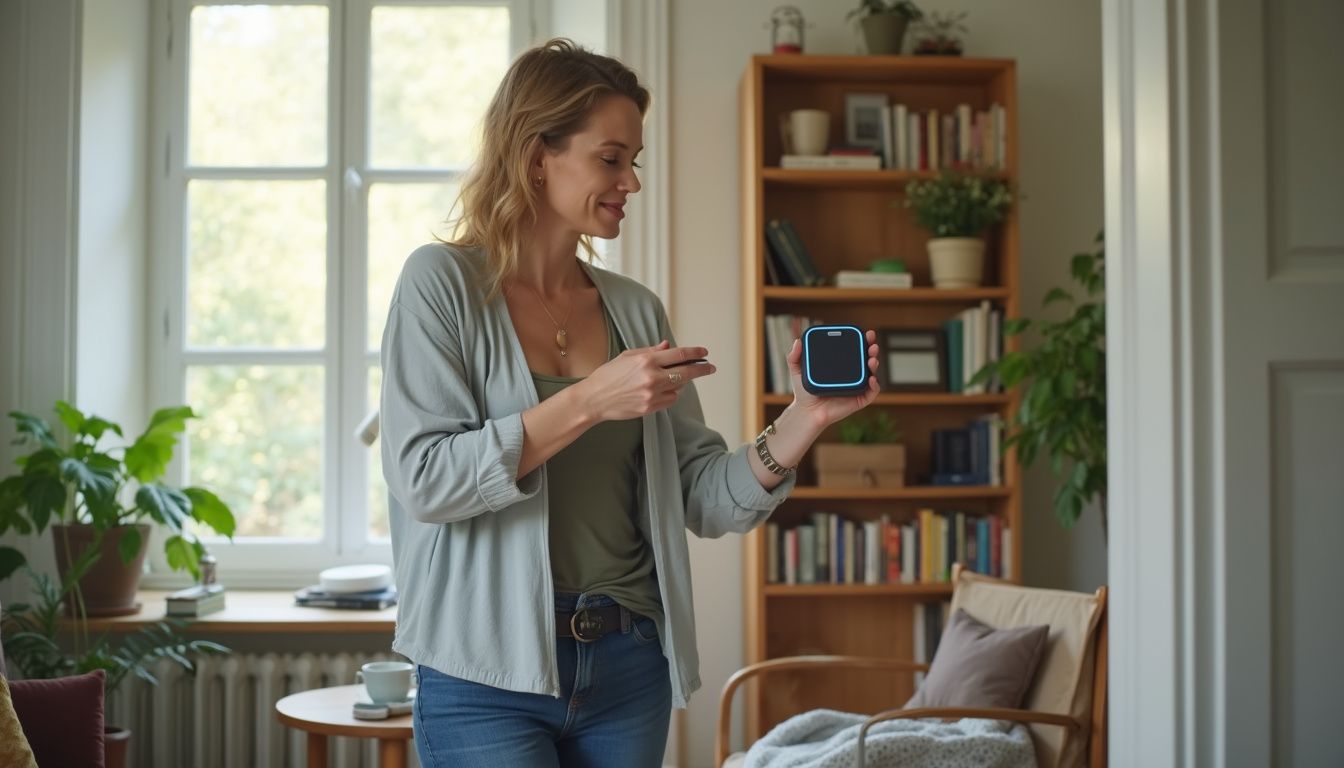
Smart doorbells basically come in two flavors, wired and battery-powered. The right choice for you really depends on your home’s existing setup and how much work you’re willing to do.
What are the features of wired smart doorbells?
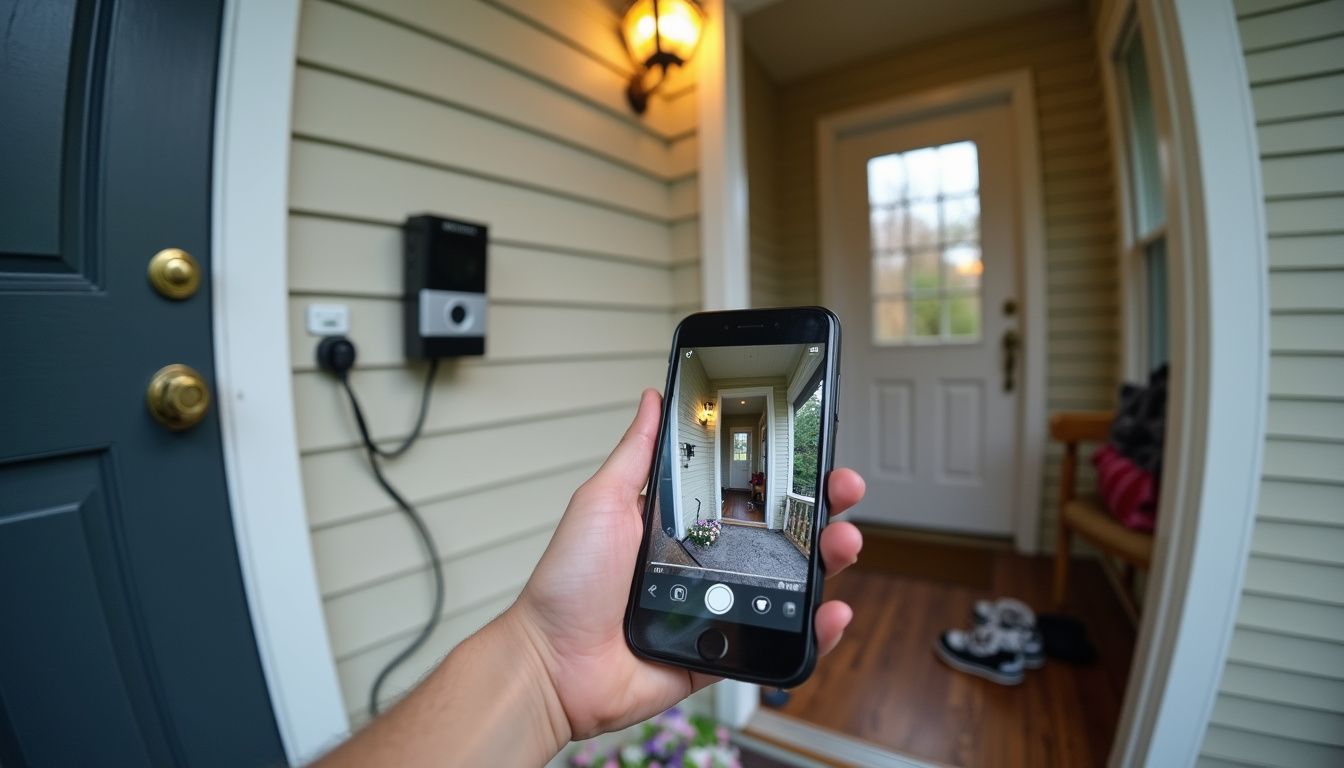
Wired smart doorbells connect directly to your home’s existing doorbell wiring. This is their biggest advantage, you never have to worry about charging or replacing batteries. I upgraded my old doorbell in about 30 minutes, and it was a “set it and forget it” kind of deal.
Because they have a constant power source, wired models can offer more advanced features. For instance, some support 24/7 continuous video recording (with a subscription) and a pre-roll feature that captures the few seconds *before* a motion event is triggered. This helps you see the full story of what happened.
Many wired options from brands like Ecobee and Google Nest also offer better performance with AI features for package and people detection. They tend to be slightly more responsive since they don’t need to conserve battery power.
What should I know about battery-powered smart doorbells?
If your home doesn’t have existing doorbell wiring, or if you’re a renter, battery-powered doorbells are your best friend. Installation is a breeze, you just mount the bracket to your door frame, and you’re good to go.
Most battery models last between two and six months on a single charge, depending on how busy your front door is. Many come with a rechargeable battery pack and a simple USB port for charging. Some Ring models even have a quick-release battery pack, so you can buy a spare and swap it out with zero downtime.
A great perk is that they keep working even if the power goes out, while wired models will go dark. The main downside is that they can sometimes be a little slower to wake up and send notifications to conserve energy.
Popular Smart Doorbell Options
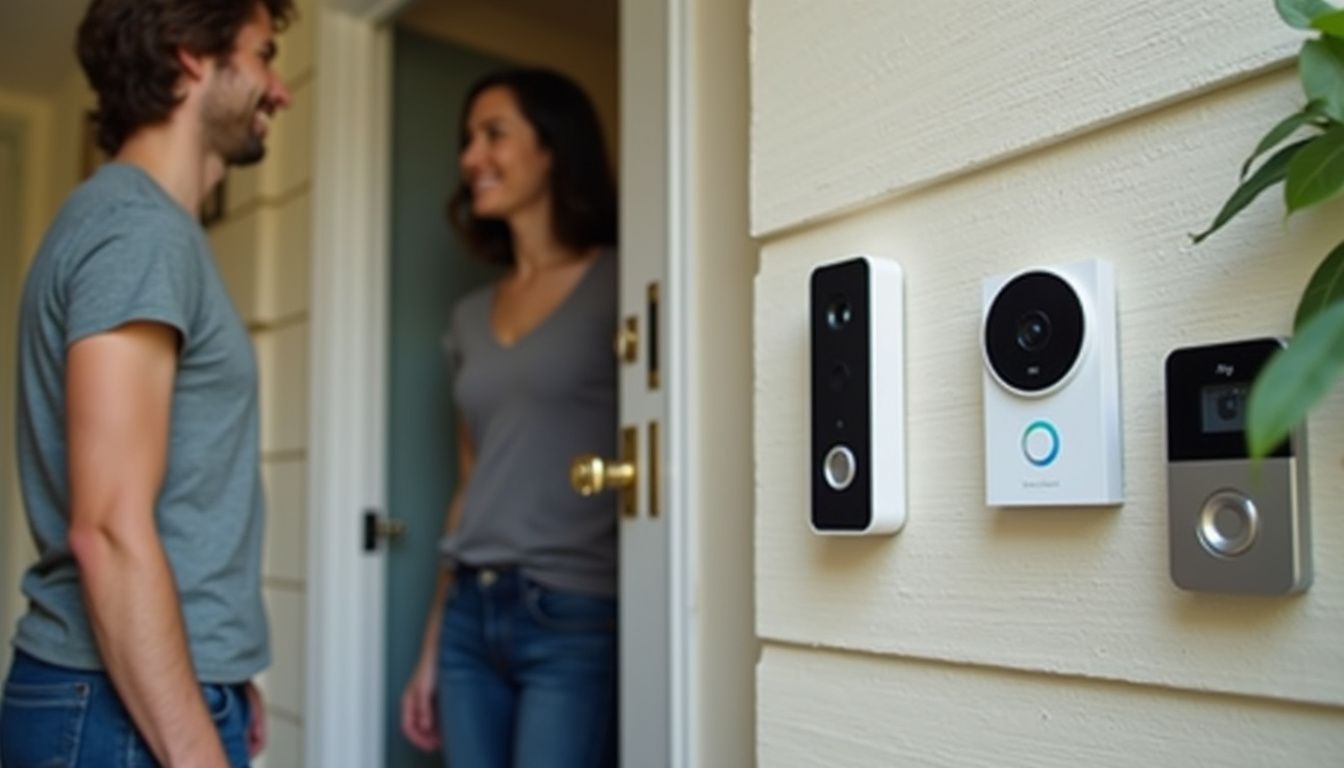
Ready to look at some specific models? There are a ton of great options out there, but these are a few of the top contenders that tech fans are loving right now.
What are the features of the Google Nest Doorbell (Wired, 2nd Gen)?
The Google Nest Doorbell (Wired, 2nd Gen) is a fan favorite for its intelligence and clean design. For around $180, it delivers incredibly clear HDR video and crisp audio, making it easy to identify visitors and packages.
One of its best features is that it offers three hours of free cloud event storage right out of the box, which is more generous than most competitors. You can also create up to four custom detection zones to focus on specific areas of your porch.
It works with both Google Assistant and Amazon Alexa for voice control. If you subscribe to Nest Aware for $8 per month, you unlock 30 days of video history and the “Familiar Faces” feature, which can tell you if a family member is at the door.
While the 2nd Gen is still a great buy, Google has released a newer version that features 2K HDR video and is powered by its Gemini AI for even smarter alerts.
What does the Ring Video Doorbell Wired offer?
If you’re looking for the most affordable entry into the smart doorbell world, the Ring Video Doorbell Wired is tough to beat. It often sells for under $65 and provides reliable 1080p HD video with a wide 155-degree field of view.
The two-way conversation feature is excellent, with clear audio that doesn’t have much delay. It’s a hardwired model, but it’s important to know that it won’t work with your existing indoor door chime, you’ll need to use a plug-in Ring Chime or an Echo device for audible alerts.
It’s designed to work exclusively with Alexa, so it’s not the best choice if you have a Google Home or Apple HomeKit setup. With a Ring Protect subscription (starting at $4.99/month), you get access to video storage and advanced person and package alerts. As noted by aarp.org reviews, it’s a very user-friendly option for those on a budget.
What are the benefits of the TP-Link Tapo D225 Video Doorbell Camera?
The TP-Link Tapo D225 is a fantastic mid-range option that offers premium features for around $90. You get sharp 2K HDR video and a super-wide 180-degree field of view, so you can see almost your entire front yard.
What makes it stand out is its flexibility. It can be hardwired or run on its rechargeable battery. I tested the battery and got about three solid months of use before it needed a five-hour charge. It also gives you the choice between local storage on a microSD card (up to 512GB) and optional Tapo Care cloud storage for $3.50 a month.
It works with both Alexa and Google Assistant for smart home integration. In response to security concerns, TP-Link moved its U.S. cloud services to Amazon Web Services (AWS) servers in Virginia in late 2024, which is great news for privacy-conscious users.
Why choose the Eufy Security Video Doorbell S220 (Battery-Powered)?
For geeks who prioritize privacy and hate monthly fees, the Eufy Security Video Doorbell S220 is a top pick. For around $100 on Amazon, this battery-powered doorbell comes with a HomeBase unit that provides 16GB of local storage.
That’s enough to hold about six months of video clips, and because it’s stored locally, you control your data. Eufy uses AES-128 encryption to protect your video files, and they are never viewed by the company. The doorbell itself records in crisp 2K with HDR support.
The battery life is solid, I got about four months per charge, which lines up with what Eufy claims. While cloud storage is an option for around $4 a month, the free local storage is the main selling point. It even works with your existing mechanical door chime, which is a nice touch.
Factors to Consider Before Buying

Before you click that “buy” button, let’s run through a quick checklist. Thinking about these factors will help you narrow down the choices and find the perfect doorbell for your needs.
Is my smart home system compatible with the doorbell?
This is a big one. Your smart home ecosystem, whether it’s Amazon Alexa, Google Home, or Apple HomeKit, determines which doorbells will play nicely with your other gadgets. Ring doorbells, for example, are owned by Amazon and work best with Alexa.
Some brands, like Eufy and Lorex, are more platform-agnostic and work well across different systems without forcing you into a subscription. The Matter smart home standard, which promises universal compatibility, is still pretty scarce in doorbells in 2025, so for now, you need to check the compatibility list for each device.
Even if a doorbell says it’s compatible, some features might be limited when used outside its native ecosystem. Always double-check before buying.
What subscription requirements come with advanced features?
As we talked about, the coolest features like facial recognition, advanced AI motion alerts, and saving video history are almost always tied to a paid subscription.
Google’s Nest Aware costs $8 per month, Ring Protect starts at $4.99, and Arlo Secure is about $8 monthly for a single camera. These plans typically give you 30 to 60 days of video storage. Without them, you’re usually limited to just a live view and basic notifications.
If you know you want those premium AI tools and extended cloud storage, be sure to budget an extra $5 to $10 per month on top of the hardware cost.
Should I choose wired or wireless installation?
This decision comes down to reliability versus flexibility. Here’s a quick breakdown:
| Factor | Wired Doorbells | Wireless (Battery-Powered) |
|---|---|---|
| Power Source | Constant power from home wiring | Rechargeable battery (2-6 months) |
| Reliability | Highly reliable, no downtime | Needs recharging, potential for lag |
| Installation | Requires existing wiring, 30-60 min setup | Easy 5-minute setup, no drilling |
| Best For | Homeowners seeking max features | Renters and homes without wiring |
Wired doorbells, like the Google Nest Doorbell (Wired, 2nd Gen), offer a more consistent experience, while wireless models like the Eufy Security S220 offer incredible convenience, especially for renters.
How do video quality and field of view compare?
Most doorbell cameras today offer at least 1080p HD resolution, but many are moving to sharper 2K video. Models like the TP-Link Tapo D225 and Arlo 2K provide that extra clarity that makes it easier to identify faces or read license plates.
Field of view (FOV) is just as important. It determines how wide of a picture your camera sees. Look for a doorbell with a wide FOV, ideally between 150 and 180 degrees, to minimize blind spots. Some models, like the Google Nest Doorbell, have a taller, portrait-style view designed to show people from head to toe, as well as packages on the ground.
Also, make sure the model you choose has HDR (high dynamic range). This feature helps balance the bright light of the sun with the dark shadows on your porch, so details don’t get washed out or lost in the dark.
What AI features like facial recognition and motion detection are available?
AI is what makes these doorbells “smart.” Facial recognition is becoming more common. The Google Nest Doorbell’s “Familiar Face” alerts can tell you when a family member arrives, while the Eufy E340 lets you tag friends and frequent visitors (with a subscription).
Motion detection has also gotten much smarter. Instead of just sensing movement, modern doorbells can tell the difference between people, animals, vehicles, and packages. Ring’s 3D Motion Detection can even track where a person walked from.
These AI perks are often what you’re paying for in a subscription, but they dramatically cut down on useless notifications and make the alerts you do get much more meaningful.
Wired vs. Wireless Smart Doorbells

Let’s dig a little deeper into the wired versus wireless debate. One offers set-and-forget reliability, while the other provides ultimate flexibility. Choosing the right one for your setup is key.
What are the advantages of wired doorbells?
With a wired doorbell, you get a constant, reliable stream of power. This means you never have to climb a ladder to take it down for charging, and you don’t have to worry about the battery dying at an inconvenient time.
This steady power supply allows for more robust features that would drain a battery quickly. These include:
- 24/7 Continuous Video Recording: Some models, with a subscription, can record video around the clock, not just when motion is detected.
- Pre-Roll Footage: This feature captures a few seconds of video *before* a motion event, giving you the full context of what happened.
- Faster Response Times: Wired doorbells are always “on” and can often send notifications and load live video feeds a bit faster than battery models.
For homeowners who want the most powerful features and minimal maintenance, a wired doorbell is almost always the best choice.
What are the advantages of wireless doorbells?
The number one advantage of a wireless doorbell is the incredibly easy installation. Since you don’t need to mess with any wiring, you can have it mounted and running in about five minutes. This makes it the perfect solution for renters who can’t make permanent changes to the property.
They are also completely portable. When you move, you can just unscrew it and take it with you. Many renters use special no-drill, over-the-door mounts like the Doorbell Boa to avoid making any holes at all.
Another great perk is that they continue to function during a power outage, as long as the battery is charged and your internet router has backup power. This provides an extra layer of security when you need it most.
Privacy and Security Considerations

Putting a camera on your home means you need to be serious about securing it. Hackers do target smart home devices, but with the right precautions, you can keep your video feeds private.
How do cloud and local data storage options differ?
You have two main options for saving your video footage, cloud storage and local storage. Each has its own pros and cons when it comes to privacy and convenience.
| Factor | Cloud Storage (Ring, Nest) | Local Storage (Eufy, Tapo) |
|---|---|---|
| Accessibility | Access footage from anywhere with an internet connection. | Must be on your home network or physically access the device. |
| Cost | Requires a monthly subscription fee ($4-$10). | One-time cost for a microSD card or hub. No recurring fees. |
| Security Control | Data is on a third-party server. You trust the company’s security. | You control the physical device. Your data stays in your home. |
| Risk of Loss | Footage is safe even if the doorbell is stolen or damaged. | If the device is stolen or the SD card fails, footage is lost. |
For maximum privacy, local storage is the clear winner. For maximum convenience and backup protection, cloud storage is better.
How vulnerable are smart doorbells to hacking?
Reputable smart doorbells from brands like Ring, Google, and Eufy have strong security measures in place. However, the market is flooded with cheap, off-brand models that can be incredibly vulnerable. In 2023 and 2024, doorbells from brands like Eken and Tuck, which use the Aiwit app, were found to have massive security flaws that could expose your IP address and network information.
A journalist was even able to demonstrate this risk by hacking into a doorbell from over 3,000 miles away. These security holes have been exploited to target people in abusive situations. Consumer Reports has gone so far as to recommend that users disconnect these specific cameras immediately.
The lesson here is to stick with trusted brands that have a public track record of prioritizing security and regularly releasing firmware updates.
What are the best practices to secure smart doorbells?
Securing your smart doorbell is crucial. I learned this myself when I got a suspicious login alert for my account. Taking a few simple steps can make a huge difference.
- Use Two-Factor Authentication (2FA): This is the single most important step. It adds a code from your phone as a second login step.
- Create a Strong, Unique Password: Don’t reuse passwords. Use a mix of letters, numbers, and symbols. A password manager like Bitwarden or 1Password can help.
- Update Firmware Regularly: Always install security patches as soon as the manufacturer releases them.
- Secure Your Wi-Fi Network: Use WPA3 encryption on your router if possible, and use a strong password for your Wi-Fi.
- Manage User Permissions: Only grant access to trusted family members. Remove access for anyone who no longer needs it.
- Review Privacy Settings: Opt out of features like Ring’s Neighbors network if you’re not comfortable with community sharing.
Smart Doorbells Without Subscriptions
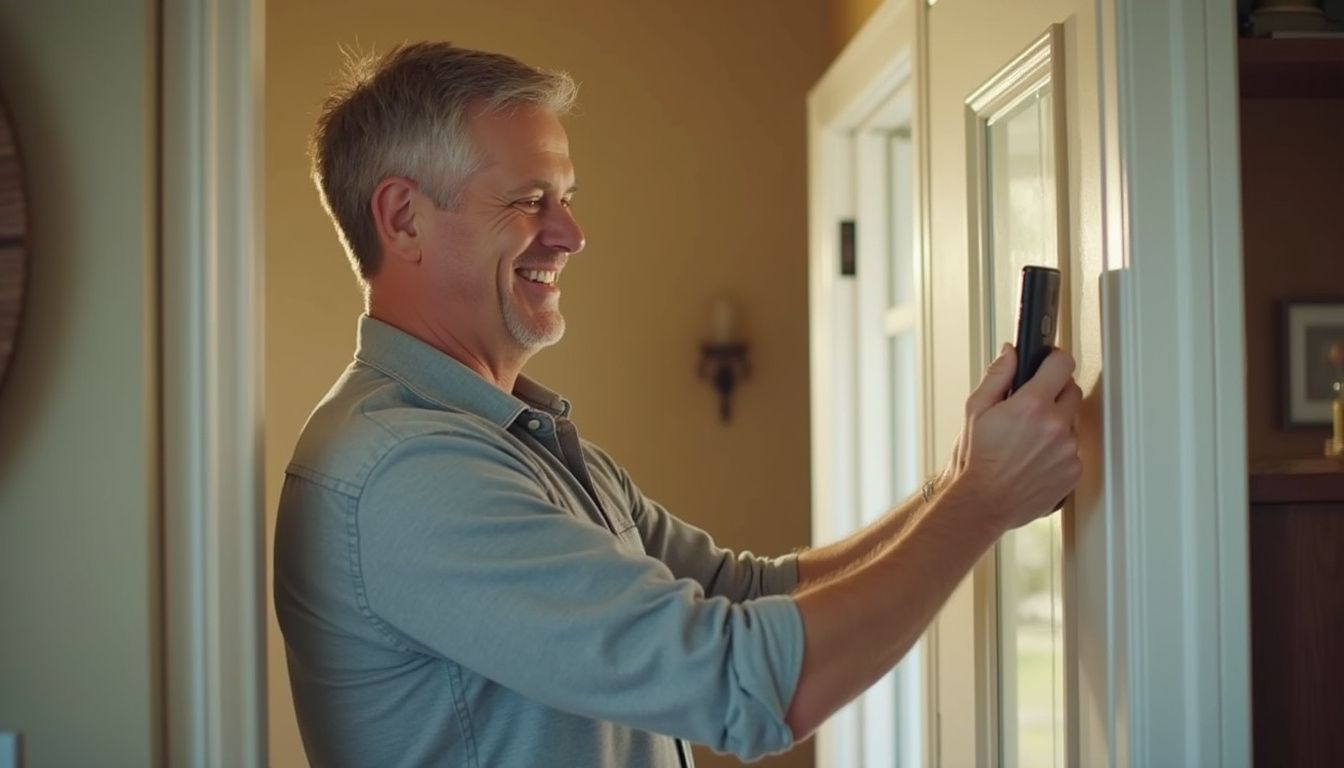
If the idea of another monthly bill makes you cringe, don’t worry. There’s a growing market of excellent smart doorbells that don’t require a subscription, thanks to local storage.
What are the benefits of no-subscription smart doorbells?
The most obvious benefit is cost savings. By avoiding a typical $5 to $8 monthly fee, you can save over $200 in just three years. That’s a significant amount of money.
The other major benefit is privacy. With local storage, your video clips are saved directly to a microSD card or a hub inside your home. The footage never has to be uploaded to a third-party server, giving you complete control over your data.
Plus, because the recordings are stored locally, you can still access them even if your internet connection goes down. Brands like Eufy and TP-Link Tapo are leaders in this space, and setup is usually just as simple as their cloud-based competitors.
Which no-subscription doorbells are the best choices?
If you want top-tier features without the monthly fee, these are some of the best no-subscription models available in 2025.
- Eufy S330: This model uses dual cameras to give you a complete head-to-toe view with no blind spots. It comes with a HomeBase that includes 8GB of internal storage.
- Lorex 2K QHD B451AJD-E: This doorbell records directly to a microSD card and supports up to a 256GB card. It also features great color night vision and works with both Alexa and Google.
- Reolink 2K Dual-Band: A great battery-powered option with an impressive five-month battery life. It stores clips locally on a microSD card (up to 256GB) and offers smart alerts for people, packages, and cars.
- TP-Link Tapo D130: This doorbell supports massive 512GB microSD cards, offers AI object recognition, and can record footage 24/7, not just when motion is detected.
- Aqara G4: This is a fantastic choice for Apple users. It supports Apple HomeKit Secure Video, which uses your iCloud storage, and can also save clips to a local microSD card.
Are Smart Doorbells Suitable for Renters?
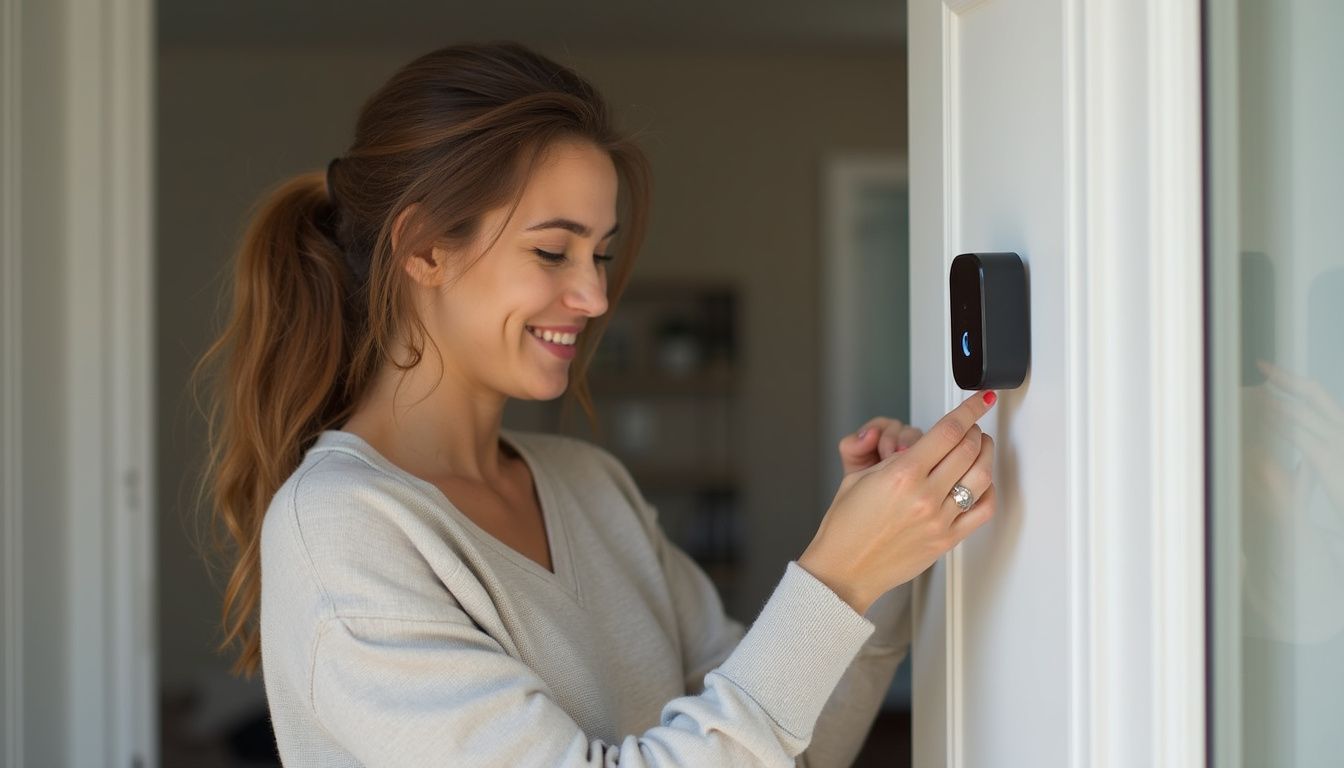
Absolutely! Renters can definitely get in on the smart doorbell action. You just have to be a little more strategic about the model you choose and how you install it.
What installation challenges do renters face with smart doorbells?
The biggest hurdle for renters is that most landlords don’t allow permanent modifications like drilling holes or altering wiring. This immediately rules out most hardwired doorbell models. Many apartments also lack existing doorbell wiring in the first place.
You may also need to check your lease agreement or with your property manager about rules regarding cameras, especially in shared entryways or hallways where you might capture footage of your neighbors. This can be a tricky privacy issue.
Wireless, battery-powered models are the way to go, but even then, you need a solution for mounting it without causing damage.
What portable smart doorbell options exist for renters?
Thankfully, there are plenty of great choices and clever mounting solutions designed specifically for renters.
The Ring Peephole Cam is an ingenious device that replaces your existing door peephole, requiring no drilling at all. Battery-powered models like the Eufy Security S220 or the Blink Video Doorbell are also perfect. I once moved with my Blink doorbell in my backpack and had it set up at my new apartment in minutes.
To avoid drilling holes, you can use a few different products:
- No-Drill Mounts: These use strong adhesive tape to securely attach the doorbell bracket to your doorframe.
- Over-the-Door Mounts: Products like the “Doorbell Boa” are anti-theft mounts that wrap around your apartment door, holding the doorbell securely in place.
With these options, you can get all the benefits of a smart doorbell without risking your security deposit.
Comparing Smart Doorbells to Other Security Devices
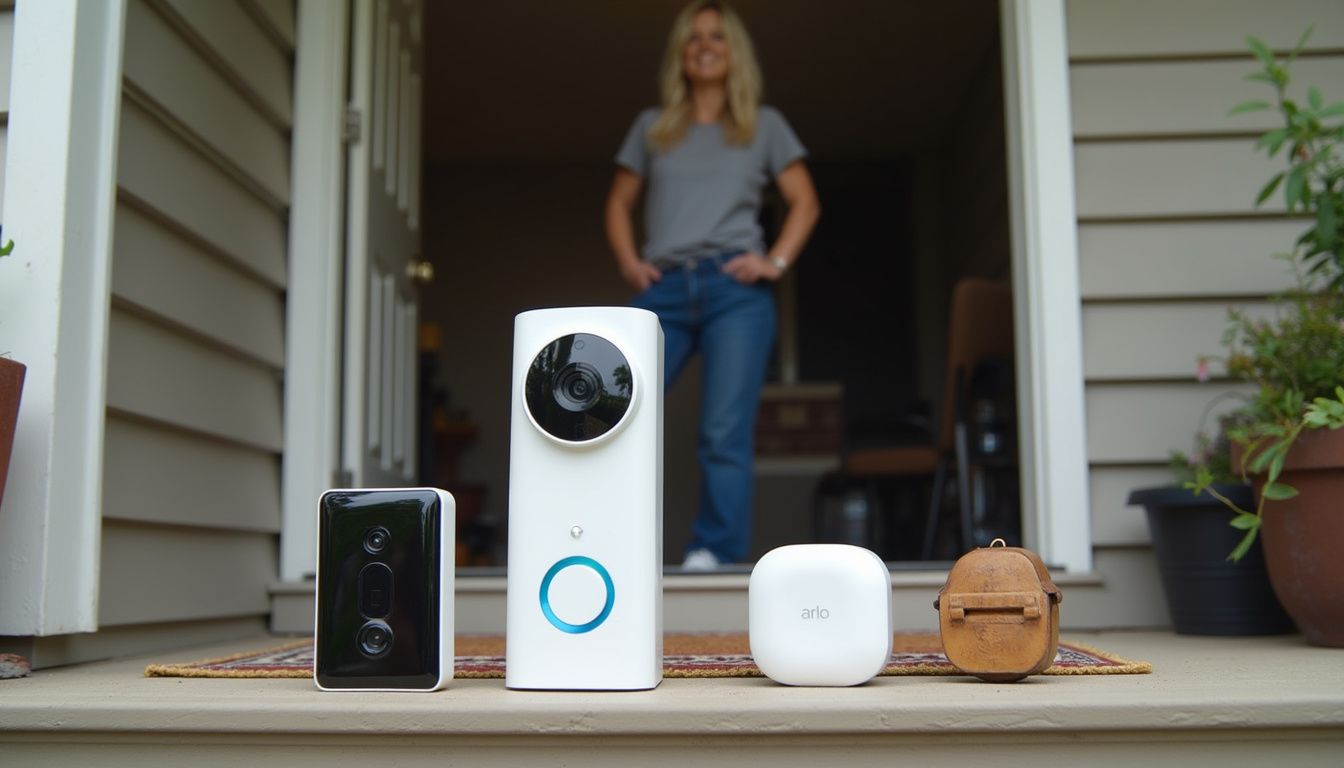
A smart doorbell is a fantastic security tool, but it’s not the only one. It’s helpful to know how it stacks up against other options like outdoor security cameras and even a good old-fashioned doorbell.
How do smart doorbells compare to outdoor security cameras?
A video doorbell is a specialist, it’s designed to give you a perfect view of your front porch and the people on it. Its main strengths are the immediate alerts and the two-way audio for interacting with visitors.
Outdoor security cameras, like those from Arlo or Wyze, are generalists. They are designed to monitor wider areas like your backyard, driveway, or the side of your house. They often have better video resolution, more powerful night vision, and sometimes even features like a spotlight or siren.
A doorbell is perfect for identifying a visitor’s face, but an outdoor camera mounted higher up can capture a broader view of your property and could potentially catch a license plate number. Many people find that the best home security setup is a combination of both.
How are smart doorbells different from traditional doorbells?
This one is pretty straightforward. A traditional doorbell is a simple switch that completes a circuit to ring a chime. Its only job is to tell you someone pressed the button.
A smart doorbell does that, but it also adds a whole layer of digital intelligence on top. With models like the Google Nest Doorbell or Ring Video Doorbell Wired, you get a live video feed, two-way talk, and motion detection. I once had a package saved from a neighbor’s dog thanks to a motion alert, something a regular doorbell could never do.
Smart doorbells also integrate with your other smart devices, like Amazon Alexa or Google Home. The trade-off for all these features is the need for a power source, a good Wi-Fi connection, and potential privacy risks and subscription costs.
How Will Smart Doorbells Change in 2025?
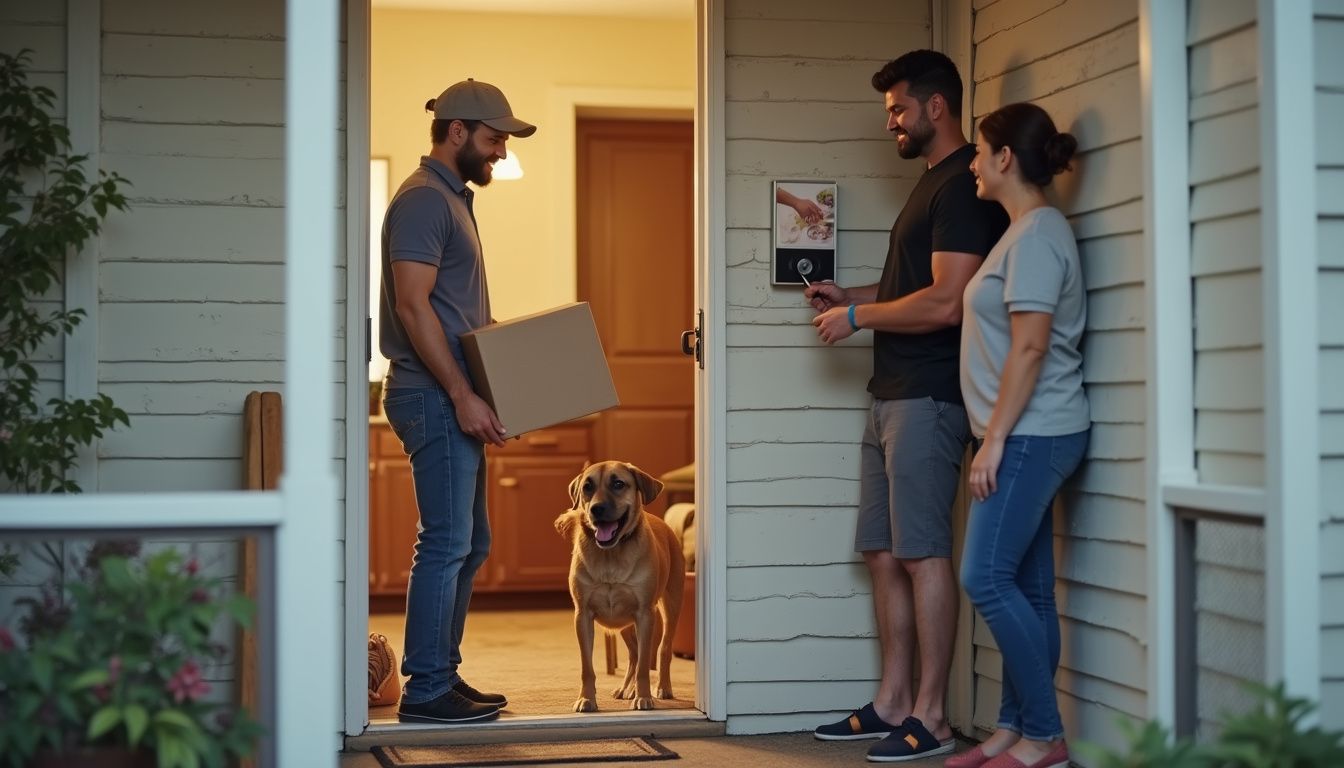
So, are smart doorbells worth it? After looking at all the angles, I think for most tech-savvy homeowners and even renters, the answer is a resounding yes.
The convenience and peace of mind they offer are hard to beat.
Looking ahead in 2025 and beyond, we can expect them to get even smarter. AI will become more advanced, with doorbells not just recognizing faces but also understanding the context of a visit. Imagine your doorbell telling you, “The mail carrier is here with a package that requires a signature.”
Battery life will continue to improve, with some models potentially lasting a full year on a single charge. We’ll also see stronger encryption and more user-controlled privacy features become standard. Ultimately, the video doorbell camera is solidifying its place as an essential piece of the modern smart home.
People Also Ask
What are the main pros of smart doorbells in 2025?
Today’s smart doorbells from brands like Google Nest and Arlo now offer features like 2K HDR video, color night vision, and AI-powered alerts that can tell the difference between a person, a package, and a passing car. This means you get incredibly clear video and notifications that are actually useful.
Are there any downsides to using a smart doorbell?
Yes, the biggest ones are privacy and the ongoing subscription costs, with plans from Ring and Nest often starting around $5 to $8 per month just to save your video recordings. There are also increasing legal concerns, as your camera recording a neighbor’s property can lead to privacy complaints and potential fines.
How do I pick the best smart doorbell for my home?
Look for key specs like a wide field of view, at least 160 degrees, and models with 2K resolution, like the Eufy Video Doorbell Dual, for sharp video quality day and night. Also, check for features that reduce false alerts, like customizable motion zones or the advanced 3D motion detection found on the Ring Video Doorbell Pro 2.
Is a smart doorbell worth it if I already have a home security system?
Yes, it adds a crucial real-time interactive layer, as many doorbell cameras can be integrated to trigger alarms or start recordings on your other security cameras when motion is detected.
References
https://www.nytimes.com/wirecutter/reviews/best-smart-doorbell-camera/
https://www.cnet.com/home/security/best-video-doorbell-cameras/
https://www.security.org/doorbell-camera/
https://fraseprotection.com/the-pros-and-cons-of-video-doorbells-for-home-security/
https://www.security.org/doorbell-camera/best/
https://www.amazon.com/Google-Nest-Doorbell-Wired-2nd/dp/B0BBSLG6PC
https://www.consumerreports.org/home-garden/home-security-cameras/ring-doorbell-review-a1607205040/ (2024-05-25)
https://www.cnet.com/home/security/best-ring-video-doorbells/
https://www.eufy.com/tw/blogs/video-doorbell/best-doorbell-camera (2025-06-11)
https://www.amazon.com/eufy-Security-Battery-Powered-Detection-Self-Installation/dp/B081C4JN51
https://www.aarp.org/personal-technology/video-doorbell-guide/ (2024-05-20)
https://www.adt.com/resources/wired-vs-wireless-doorbell
https://www.safehome.org/doorbell-cameras/best/no-subscription/
https://www.researchgate.net/publication/378655180_The_usage_of_smart_doorbells_in_smart_home
